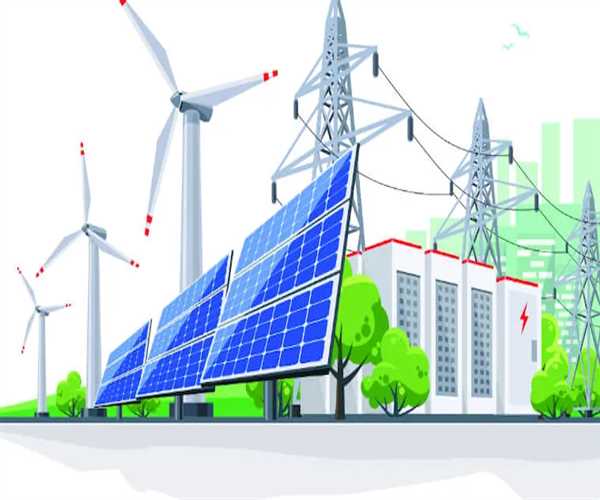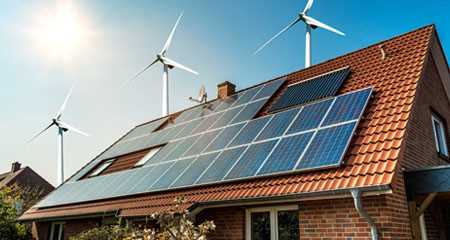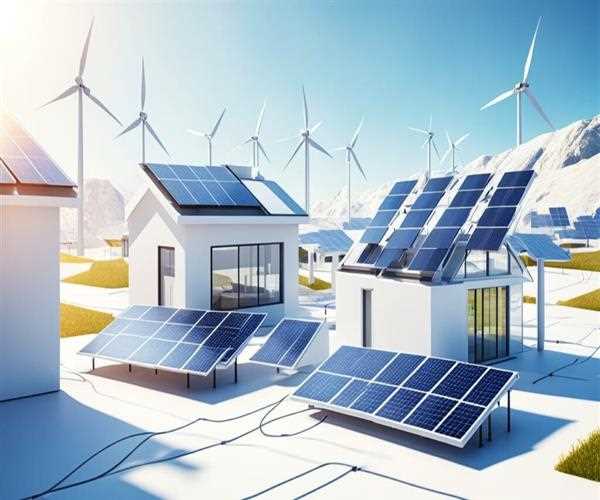Search here

08-Nov-2024 , Updated on 8/5/2025 6:44:16 AM
Top 10 Ways To Generate Green Energy In Home
Green power at home will spur a cleaner environment apart from sometimes lowering monthly utility bills. Here are ten methods to generate clean energy at home that will help in lowering carbon footprint while saving on your electricity bill. From solar power to wind turbines and geothermal systems, you will learn how each can be implemented easily in your home.
1. Solar Power
The most common source of renewable energy when installed at home is through the installation of solar panels, which convert sunlight into electricity and can be mounted either on your roof or in your backyard. This source of renewable energy weakens reliance on fossil fuels while it can easily cover a significant percentage of your energy needs, mainly in sunnier climates. You can also have the option of using a battery storage system for excess power stored that you can use during cloudy days or at night. .
2. Wind Energy
Home-based wind turbines are possible if you stay in an area where the wind is steady. Small models will suffice to provide enough electricity to supplement. Wind turbines will serve best in open rural settings or large areas where they have the full capacity to harness wind currents. Bringing in systems of wind energy can dramatically reduce one's reliance on the grid while cutting energy costs.

3. Geothermal Heating and Cooling
Geothermal systems use the steady underground temperatures of the earth to heat and cool your home. This heating and cooling system employs buried underground pipes that distribute heat in exchange for a clean and efficient manner of keeping warm or cool without burning fossil fuels. Although the geothermal installations can be costly to install, they are very efficient and long-lasting; hence, they will save you in the long run.
4. Biomass Energy
Biomass energy involves using organic matter such as wood pellets, agricultural wastes, or even domestic wastes to generate heat. Such a system includes biomass boilers and stoves suited for rural homes or for those that have waste wood or agricultural residues. Systems based on such generation minimize reliance on heating fuels and benefit from the management of waste sustainably.
5. Hydropower (Microhydro) Systems
If your private home has a herbal water supply, like a movement or river, micro-hydro energy is a feasible choice. Small-scale hydropower structures generate strength through harnessing the waft of water. These systems offer constant power production, provided that water flow is dependable, and might produce a lot of energy in contrast to different assets.
6. Energy-efficient Windows and Insulation
Improving your own home’s insulation and putting in power-efficient windows can drastically lessen heating and cooling desires. Double- or triple-glazed home windows and outstanding insulation materials help hold a solid indoor climate, requiring much less strength to heat or cool your private home. This enhancement is a truthful way to reduce electricity intake without putting in an extra system.
7. Solar Water Heating Systems
Solar water heating systems produce hot water directly because they employ the sun's energy. The systems are more efficient compared to the conventional water heaters. The system comprises a rooftop solar collector that heats water collected in an insulated storage tank. Solar water heating is excellent in sunny regions; it provides a renewable source of hot water throughout the year.

8. Rainwater Harvesting with Solar Pump Systems
The water storage system using rainwater harvesting can be integrated with the solar pump for the efficient management of water within a home. The collected rainwater is stored in tanks and used through irrigation or household needs, while the solar pumps will distribute this energy, making the entire system self-sustainable and energy efficient.
9. Smart Home Technology for Energy Management
Home appliances and devices, such as thermostats, lights, and even appliances, can be programmed for maximum efficient energy consumption. The use of IoT-enabled devices allows a homeowner to keep tabs on the energy consumption pattern and allow appliances to run on off-peak hours or in the low power mode. Such intelligent systems can definitely reduce energy bills and lead towards a green energy plan for your home.
10. Renewable source charging electric vehicle stations
If you have an electric vehicle, then the best green option may be to establish a home renewable power charging station by using solar panels or wind turbines. That approach would not only recharge your vehicle but also fit very well into a home renewable energy implementation so that you can cut carbon emissions while traveling.
Conclusion
Home investment in green energy solutions creates a long-term sustainable future as well as saving costs. From placing solar panels to using energy-saving windows and smart home technology, there are numerous ways to reduce dependence on traditional energy sources. By installing some of these solutions, one can enjoy a much greener and more energy-independent home environment.

Student
Being a professional college student, I am Shivani Singh, student of JUET to improve my competencies . A strong interest of me is content writing , for which I participate in classes as well as other activities outside the classroom. I have been able to engage in several tasks, essays, assignments and cases that have helped me in honing my analytical and reasoning skills. From clubs, organizations or teams, I have improved my ability to work in teams, exhibit leadership.
Comments
Join Our Newsletter
Subscribe to our newsletter to receive emails about new views posts, releases and updates.
Copyright 2010 - 2025 MindStick Software Pvt. Ltd. All Rights Reserved Privacy Policy | Terms & Conditions | Cookie Policy